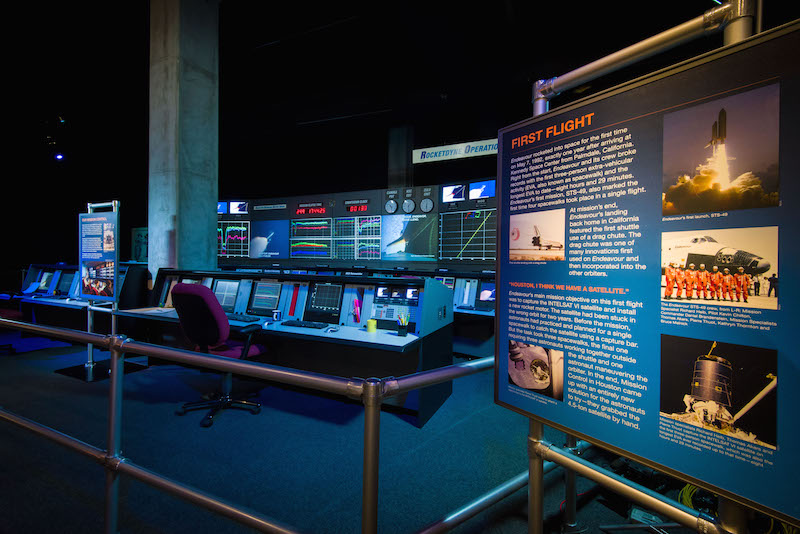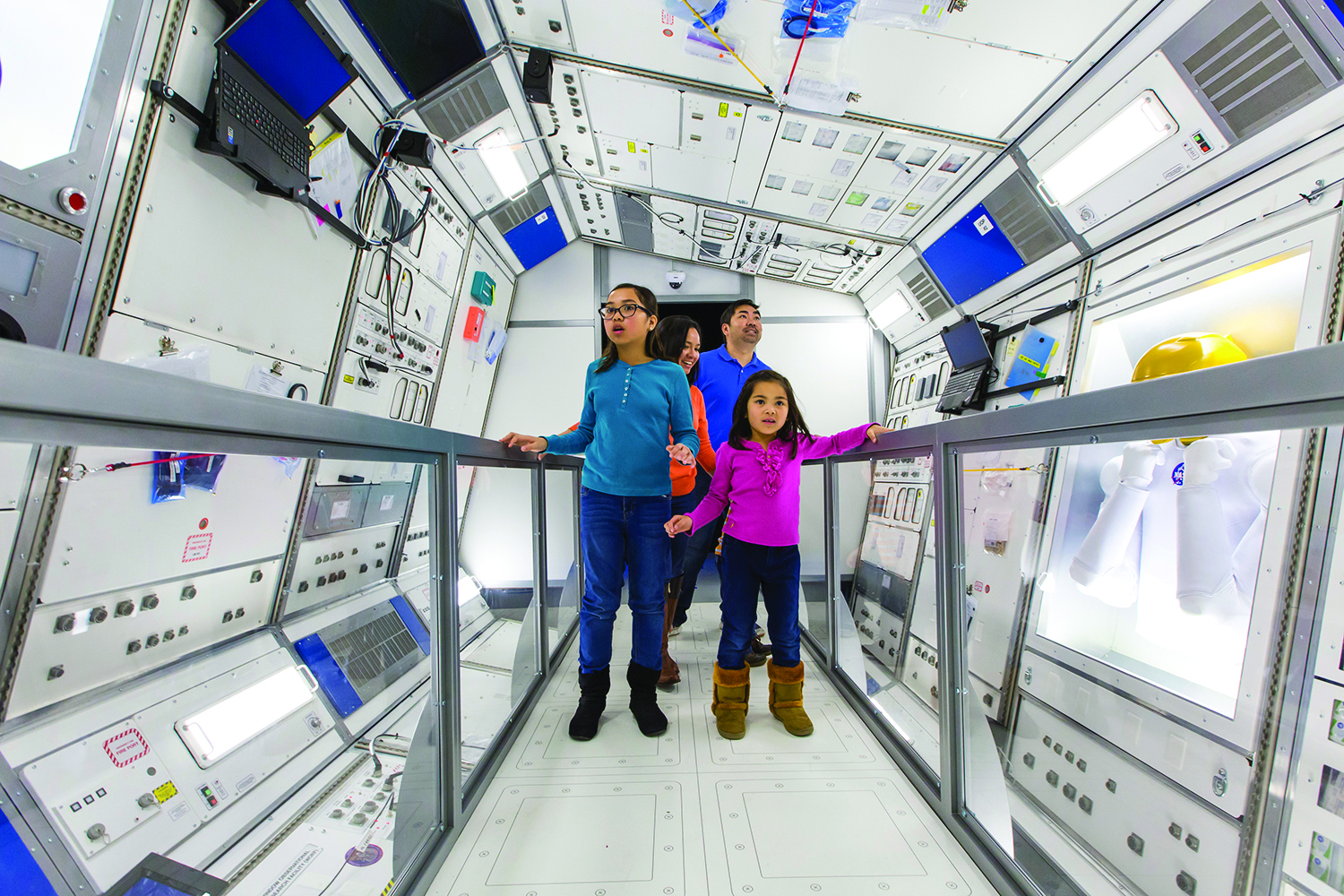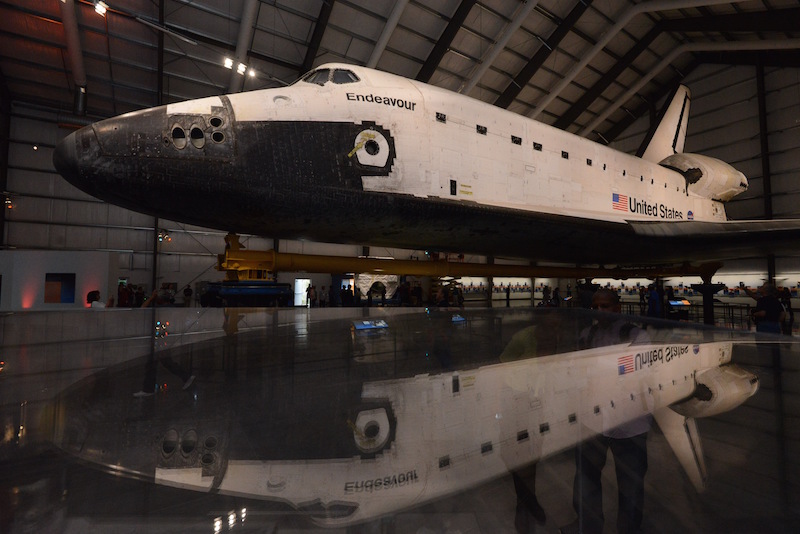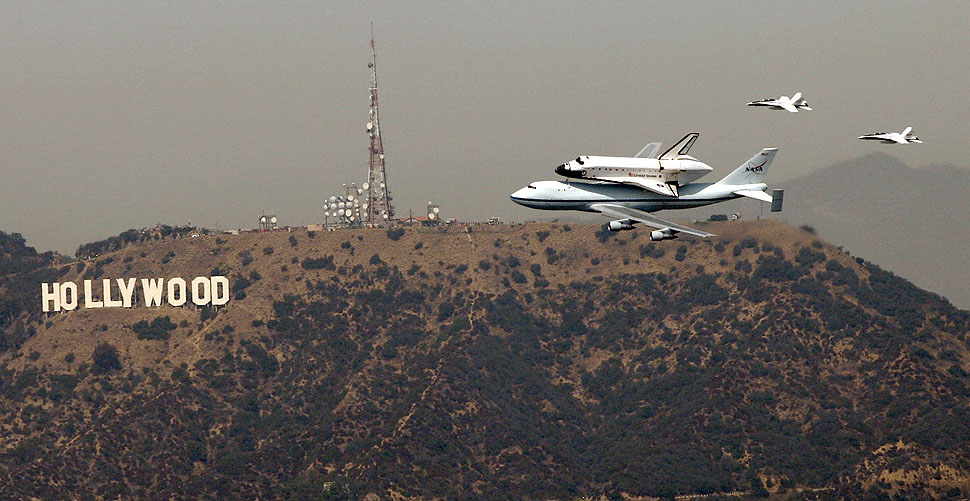Space exploration might not be one of the top subjects people associate with Southern California, but perhaps it should be. While Hollywood mythmakers churn out tantalizing tales about visiting the final frontier—from Stanley Kubrick’s epic 1968 science fiction film 2001: A Space Odyssey to the current blockbuster, The Martian—some of the world’s top brains behind the scenes of real-life space travel toil right here, in Southern California.
Caltech’s Jet Propulsion Laboratory in Pasadena is busily preparing for Mars 2020, a project to land a new robotic science rover that will address key issues about the potential for life on the red planet. This proposition is more promising than ever since September, when NASA confirmed evidence that potentially life-sustaining liquid flows on Mars. Meanwhile, in Hawthorne, visionary entrepreneur and inventor Elon Musk heads a group of approximately 4,000 employees who are designing, manufacturing, and launching advanced rockets and spacecraft, with the ultimate goal of enabling people to live on other planets.
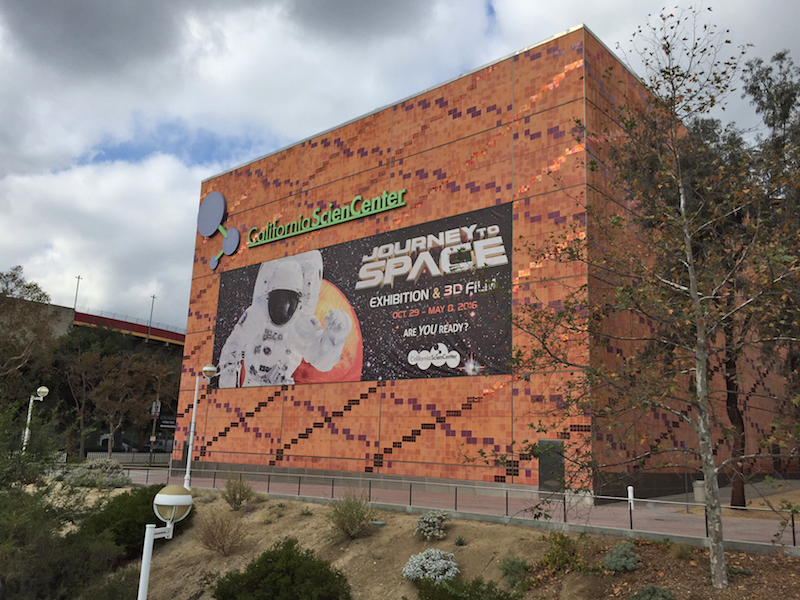
And now through May 8, 2016, the California Science Center is hosting the travelling exhibition and 3-D film Journey to Space, which explore what it is like to live and work in space today, and what the future of space exploration holds. Since a visit to the Science Center also offers the opportunity to stand before the mighty Space Shuttle Endeavor, the museum is presently offering a high-impact trio of experiences for space enthusiasts, including several moments along the way where the local SoCal connection is noted.
When the heavy, black curtain at the entrance to Journey to Space is parted, your eyes need a moment to adjust to the darkness. It turns out adjusting to new environments is apt preparation for the exhibition itself, which employs engaging, interactive exhibits to show visitors how astronauts adapt to life in space.
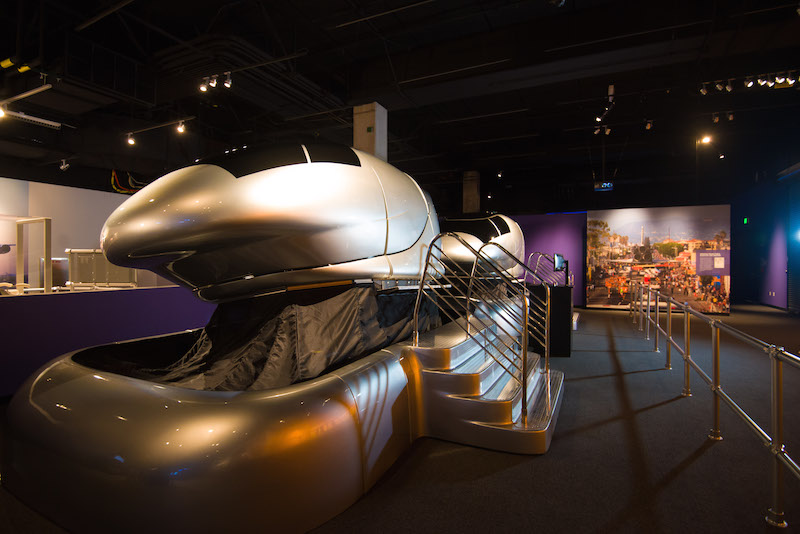
A key focus is on weightlessness and the challenges it presents to the human body during long-term space missions. Next to interesting artifacts like Neil Armstrong’s training helmet and gloves and a compression suit that astronauts must wear in space, several games, multimedia components, and hands-on exhibits show how astronauts eat, sleep, and even use the bathroom in space.
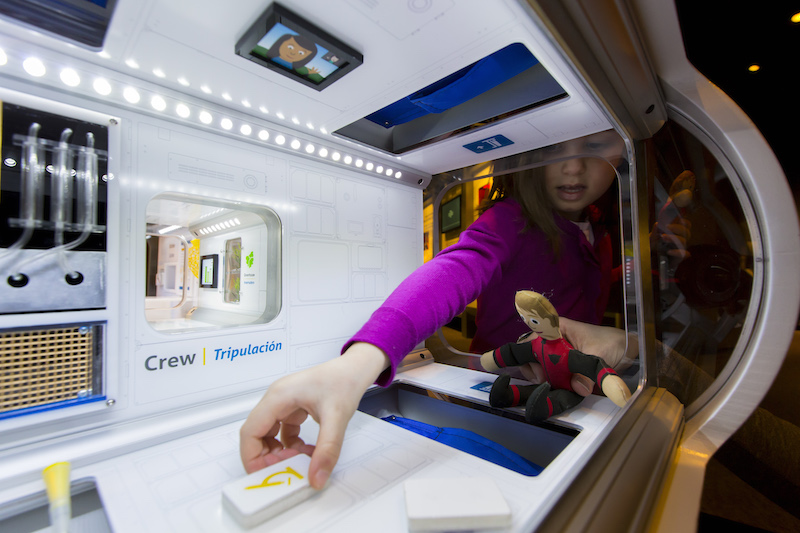 Visitors have a chance to operate a robotic arm like the ones astronauts use on the space shuttle, and see engaging footage from past missions of crews living and working in space.
Visitors have a chance to operate a robotic arm like the ones astronauts use on the space shuttle, and see engaging footage from past missions of crews living and working in space.
One of the exhibition’s biggest draws will surely be the full-scale replica of the Destiny Lab, the primary research facility for U.S. payloads on the International Space Station (ISS). We learn that the ISS is as big as a football field, due to its massive, energy-making solar array, but about the size of a five-bedroom house on the inside. Approach via a ramp and step into the lab for a virtual video tour from astronauts who have lived and worked there. But be forewarned: in order to replicate the sense of disorientation that comes from being in space, a rotating mechanism gives the impression that the room is spinning! As one of the astronauts in the video explains, in space there is no up or down, and a few minutes in the Destiny Lab really brings this point home.
The 44-minute 3-D film Journey to Space that is screening in conjunction with the exhibition vividly shows how NASA has been transitioning from the end of the Space Shuttle era to an even more ambitious future, which could include landing astronauts on Mars or capturing asteroids. With stunning visual imagery and in collaboration with leading space experts, the film pays homage to NASA’s past accomplishments and shows how information garnered during those missions will enable a dynamic future for space exploration.
Any visit to the California Science Center merits a stop at the Space Shuttle Endeavor, but in conjunction with Journey to Space, it is simply a must. Begin the experience in Endeavour: The California Story, a companion exhibition featuring images and artifacts that relate the shuttle program in California, where the orbiters were built. The exhibition includes images of Endeavour under construction locally in Palmdale and Downey, as well as artifacts that flew into space aboard it.
A highlight of the Endeavor exhibition is the actual control center where engineers at the Rocketdyne Operations Support Center (ROSC) in Canoga Park remotely monitored the Space Shuttle main engines during all 135 space shuttle launches and for the first eight and a half minutes of every shuttle flight. Rocketdyne staff here in Southern California checked pressures, temperatures, and other readouts until the shuttle reached orbit, and if something went wrong, they would provide recommendations to launch control in Florida or Mission Control in Houston.
The exhibition concludes with a time-lapse video that shows Endeavor’s triumphant homecoming to Los Angeles. Many will remember watching the skies on September 21, 2012 as Endeavor toured California on the back of NASA’s modified 747 carrier aircraft, landing at Los Angeles International Airport after its final ferry flight into history. After a two-day journey through the streets of Los Angeles, with onlookers cheering day and night, the Endeavor finally arrived at the Science Center.
Finally, head downstairs for your turn to stand before this behemoth of aeronautical engineering. Endeavor is a crowd favorite—its return to Los Angeles has lured more than one million additional visitors annually to the Science Center—and it’s easy to see why. Not often do you get the chance to stand beneath a craft that successfully completed twenty-five missions into space, including the first service mission to the Hubble Space Telescope, as well as the first mission to add a U.S. component to the International Space Station. It’s an awesome experience, and powerful symbol of Southern California’s vital role in space exploration.
The California Science Center is open daily from 10:00 am–5:00 pm. Admission is free, excluding IMAX or special exhibitions, like Journey to Space, which is $9.75 for adults, $8.25 for youth ages 13–17, and $6.25 for children, students, and seniors. Endeavour timed reservations for individuals are required for weekends only. Combination tickets for the exhibition and IMAX film may be purchased, as well.
California Science Center // 700 Exposition Park Drive // Los Angeles CA 90007 //323/724-7624
Written by Stacey Ravel Abarbanel

